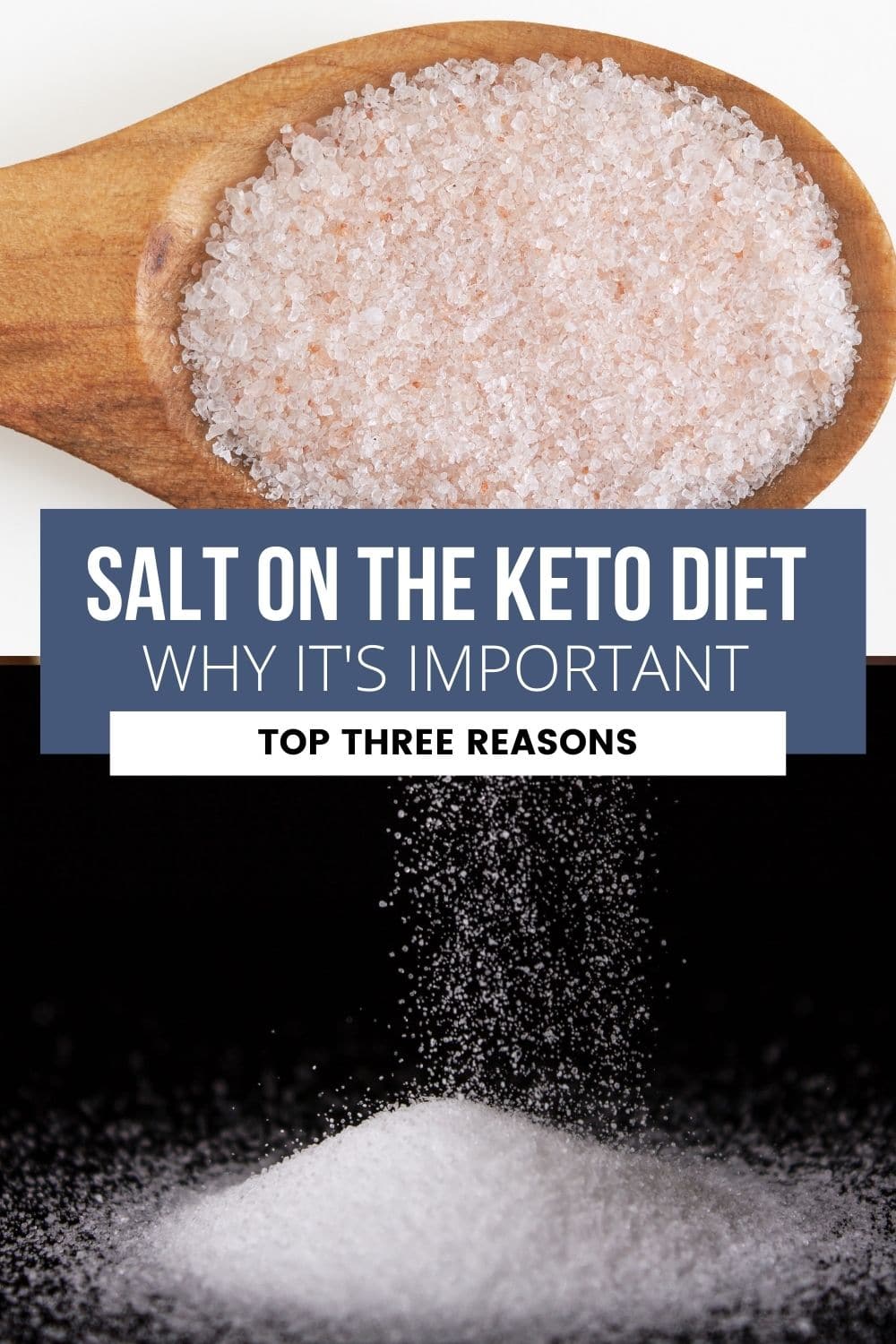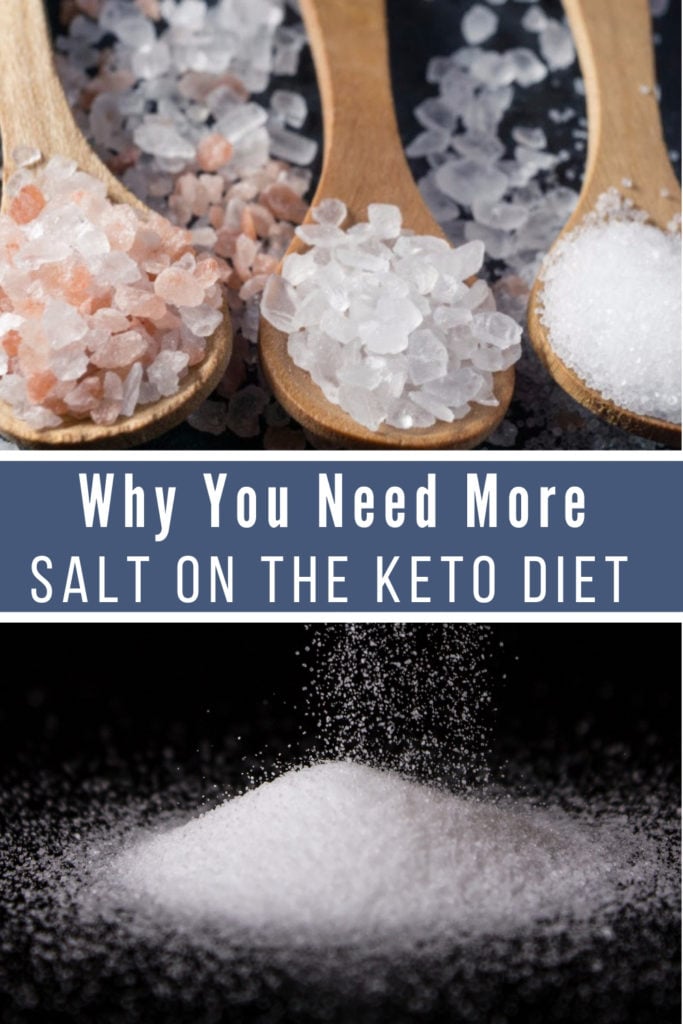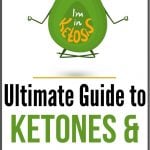Salt on Keto Diet: 3 Reasons to Include More
When following a ketogenic diet, our bodies function differently. In the most simple terms, the transfer of burning carbs for fuel to fat can cause our body to be off-kilter as electrolytes become off-balanced. One mineral the body cannot live without that gets depleted often on keto is sodium. It’s essential to consume more salt on Keto when eating a high-fat diet. In this post, you’ll find three reasons why you need to include more salt when following a keto lifestyle.
Salt on Keto Diet? Why You Need Salt On Keto
One of the trickier aspects of the Ketogenic diet, especially to newbies, is understanding the importance of increasing salt consumption. As our body transitions from being a sugar burner to a fat burner, it reduces the amount of sodium stored in the body, thus requiring more salt in our diet. Since keto excludes most convenient processed foods high in sodium, the amount of sodium consumed is naturally decreased. As a result, our sodium levels often drop. This can cause unpleasant side effects. Fortunately, we can easily avoid these side effects with the few simple tips I’m sharing below!
Tip: Don’t miss my comprehensive How to Get Started with the Keto Diet ebook, where all the resources to get started are compiled in a simple downloadable format without needing to read multiple blog posts.
Sodium Isn’t the Enemy When in Nutritional Ketosis.
For years we’ve been taught that salt is the enemy, especially regarding type 2 diabetes and high blood pressure. While I am not a doctor, there is much research to the contrary. The video below with Dr. Kent Berry & Dr. DiNicolantonio is a fantastic resource that tackles the topic “is salt bad for you.”
What is Sodium’s Role in the Body
Sodium is an essential mineral that our body needs to regulate water retention and balance water in and around cells. Without the proper amount of sodium, we can experience complications like restlessness, brain fog, fatigue, muscle cramps, tummy troubles, and more. Sodium intake is even more important while following a ketogenic diet since we get less sodium than normal. Sodium and potassium work together, so when the level of sodium drops, it directly affects potassium, which can make you feel worse.
Three Reasons Why It’s Important to Include More Salt on Keto
1. Low Sodium Levels can Lead to “Keto Flu.”
One of the less desirable effects of the ketogenic diet is the “Keto Flu.” This usually happens within the first three to five days of following a keto diet. Symptoms include feeling lethargic, run-down, irritable, unmotivated, etc. Our body doesn’t have access to the glucose it previously used for energy and hasn’t made the necessary metabolic changes to efficiently use fat for fuel yet.
Perhaps the biggest cause of the keto flu is dehydration and electrolyte imbalance. I recently posted a simple guide to electrolytes on keto that simplify and explains electrolytes. Thankfully, the keto flu comes and goes quickly on low-carb diets. Staying hydrated and balancing your electrolytes is a simple process that can minimize both the duration and extent.
2. Low Sodium Levels can Lead to Tummy Troubles
3. Low Electrolyte Levels Can Increase the Risk for Muscle Cramps
Muscle cramps, especially at night, typically indicate mild dehydration, low electrolyte levels, or both. This can be a very common issue, especially in the early days when starting a ketogenic diet. Easy fixes for this include drinking a sugar-free electrolyte drink like Ultima Replenisher or Powerade Zero (if you follow a more lazy keto diet), drinking water, taking the appropriate supplements to balance electrolytes, and adding more salt on keto in your diet.
How to Get More Salt on Keto Diet
Luckily, increasing your sodium intake is an easy fix. Add more salt to the foods you eat, drink bone broth, or enjoy salted nuts. Don’t forget the importance of potassium-rich foods such as leafy greens, since some people on Keto also don’t get enough potassium.
Balancing electrolytes and staying hydrated can alleviate the vast majority of issues experienced when starting a Ketogenic diet. As your body transitions from burning glucose for fuel to fat, make sure you supplement your diet with the necessary electrolytes to feel your best and achieve optimal weight loss.
Best Salt for the Keto Diet
- Pink Himalayan Salt (also called pink salt) – This beautiful pink salt is loaded with minerals like potassium, magnesium, and calcium, to name a few. It’s a favorite choice among many on keto as it is more natural and less processed than traditional table salt.
- Sea Salt – Sea salt is derived from evaporated seawater. With larger crystals, it is much saltier than regular table salt and also contains added minerals.
Disclaimer: While I feel confident offering suggestions for the Keto lifestyle, I’m not qualified to give medical advice. As always, when it comes to your health, seek a doctor’s advice.
More Keto 101 Resources:
-
- What’s the difference between Keto and Low-Carb?
- Intermittent fasting for beginners
- What is Ketosis and what are the signs you’re in it?
- What does it mean to be fat-adapted?
- Leg Cramps on Keto: Causes and Solutions
- What is Ketosis? Ultimate Guide to Ketosis & Ketones
- Salt on Keto Diet: 3 Reasons to Include More
- How to Make Bulletproof Coffee
- The Best Keto Products on Amazon
- How to Eat Healthy When Stuck at Home
- 10 reasons that may be causing a stall on the Keto Diet
- Electrolytes on Keto: Explained & Simplified
- 7 Changes You’ll Experience Within the First Month of the Keto Diet
- Amazon Keto List
- 10 easy tips for eating Keto on a budget
- Very Best Basic Keto/Low Carb Grocery List
Don’t Miss New Keto Resources or Recipes
If you enjoyed this post about salt on Keto, you might like my other Keto resources! Follow my Easy Keto/Low Carb Recipe Page on Facebook, where I post all my new recipes. You can join the page here and follow me on Pinterest here. Many fantastic resources are available if you are just getting started following a keto diet and would like more information. Amazon has several excellent books you may want to check out here. It’s all about learning what works best for you and your family.









Love the simple low carb receipes.
Awesome! Glad you enjoy them.